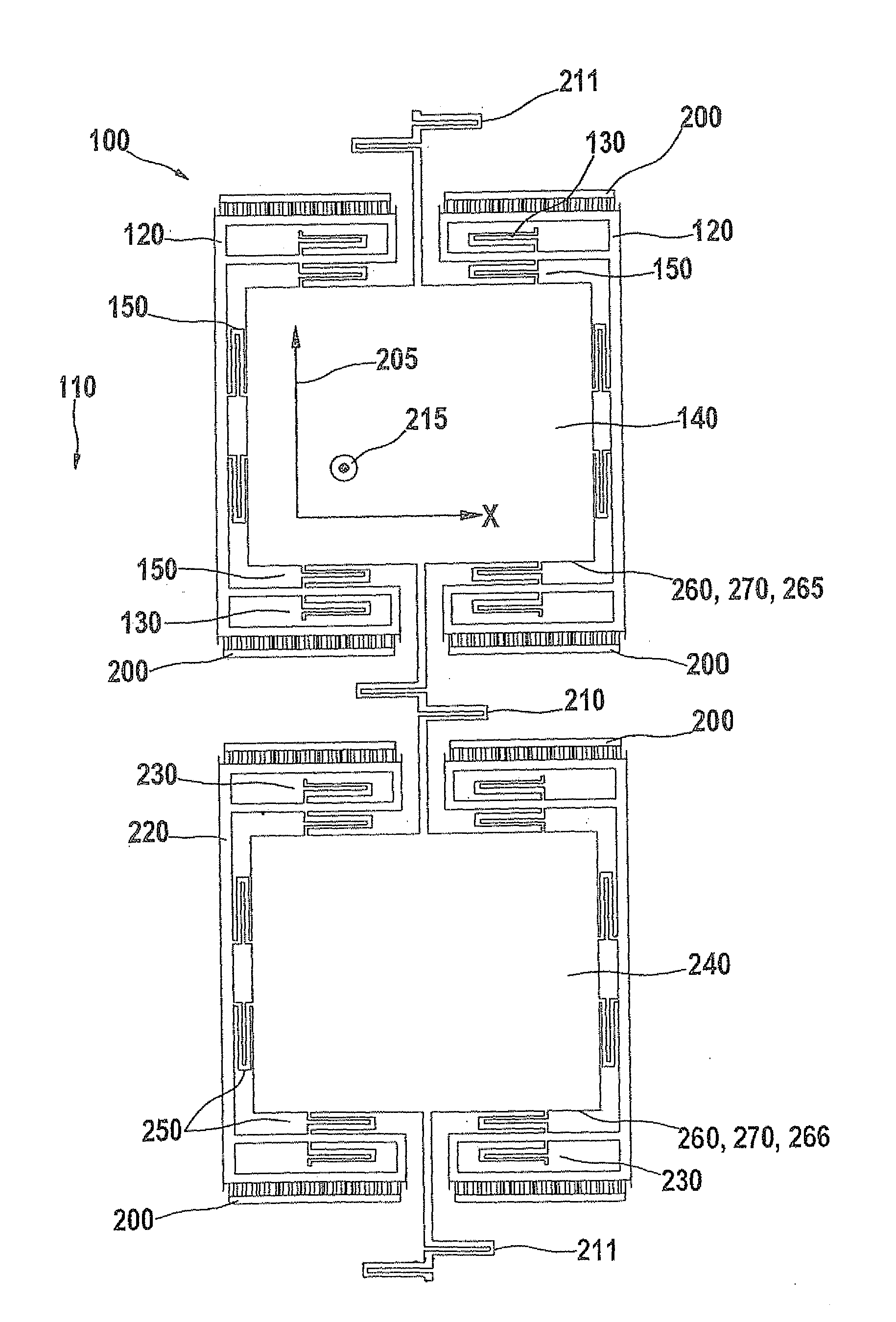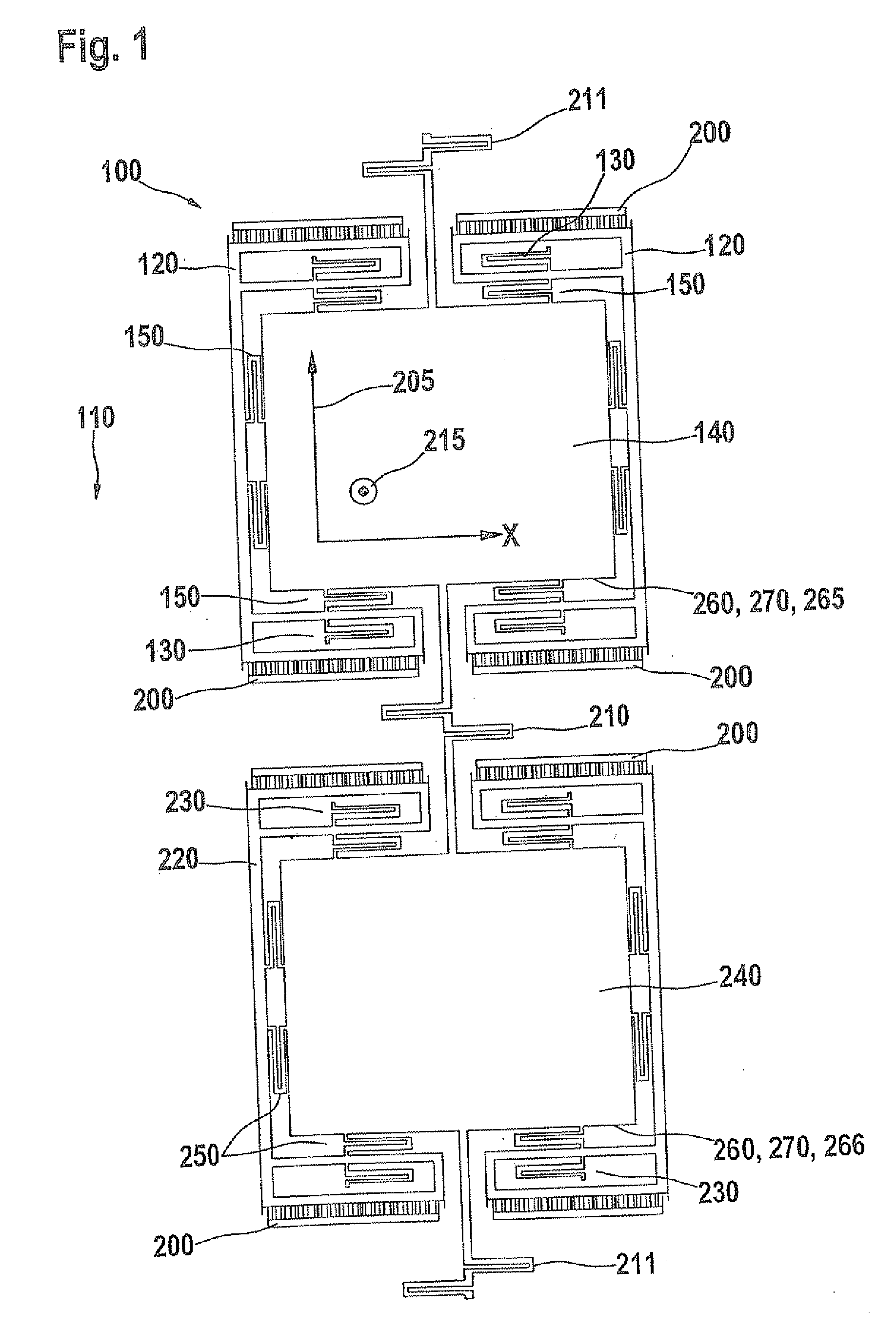Evaluation electronics system for a rotation-rate sensor
- Summary
- Abstract
- Description
- Claims
- Application Information
AI Technical Summary
Benefits of technology
Problems solved by technology
Method used
Image
Examples
Embodiment Construction
[0016]FIG. 1 shows a schematic top view onto a micromechanical rotation-rate sensor 100, which is able to be used together with an evaluation electronics system 300, shown in FIG. 2. However, rotation-rate sensor 100 shown in FIG. 1 only represents an example. An evaluation electronics system 300 of FIG. 2 is suitable for use with any type of vibrating rotation-rate sensors. In particular, an evaluation electronics system 300 may also be used in connection with rotation-rate sensors that are provided for the detection of rotation rates about other rotational axes than the one in FIG. 1.
[0017]Rotation-rate sensor 100 is situated above a surface of a substrate 110. Substrate 110 may be a silicon substrate, for example. The surface of substrate 110 is situated in a plane that is generated by an x direction and a drive direction 205 perpendicular to it. A measuring direction 215 is oriented perpendicular to the substrate surface, that is, also perpendicular to the x direction and drive ...
PUM
 Login to View More
Login to View More Abstract
Description
Claims
Application Information
 Login to View More
Login to View More - R&D
- Intellectual Property
- Life Sciences
- Materials
- Tech Scout
- Unparalleled Data Quality
- Higher Quality Content
- 60% Fewer Hallucinations
Browse by: Latest US Patents, China's latest patents, Technical Efficacy Thesaurus, Application Domain, Technology Topic, Popular Technical Reports.
© 2025 PatSnap. All rights reserved.Legal|Privacy policy|Modern Slavery Act Transparency Statement|Sitemap|About US| Contact US: help@patsnap.com



